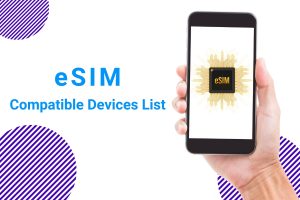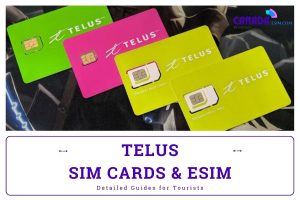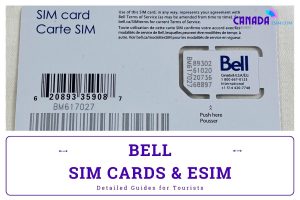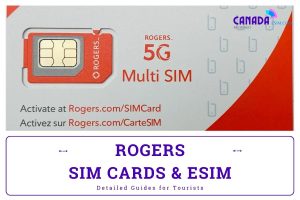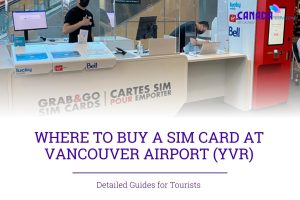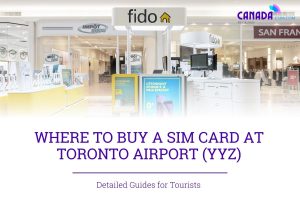Choosing the right SIM card is important for staying connected in Canada. This guide provides an overview of Canada SIM card options from major carriers like Rogers, Bell, and Telus. We’ll compare plans, pricing, and where to purchase SIMs. Whether you need a temporary or long-term solution, learning about Canada’s SIM landscape is the first step to seamless connectivity.
Table of Contents
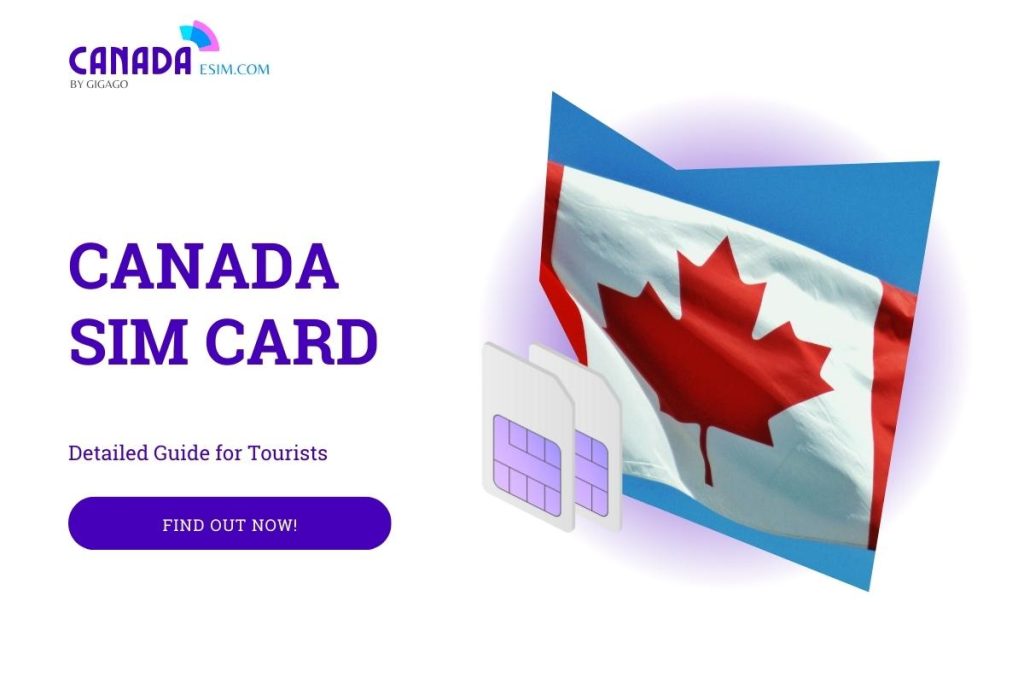
1. Should I Buy A New SIM Card For My Canada Trip?

Buying a local SIM or using your plan varies by coverage, costs, and features. This overview compares accessing Canadian networks so you can choose the most suitable solution for your needs:
| Option | Pros | Cons | Approximate Budget |
| Local SIM card | No roaming charges, fast coverage, easy top up | May need phone unlock, lose home, extra costs for int'l calls/texts | from ~$22 with data, voice, and SMS |
| eSIM | Widely available, cheaper than physical SIM | Need compatible device, may not have local calls & text | from $9 for 3 days |
| Roam with home network | Keep home connection, avoid SIM swap | Very expensive, limited coverage/speed, unexpected charges | $10/day int'l pass with AT&T |
| Portable WiFi device | Own secure connection, shareable, control usage | Extra device to carry, rental fees, limited battery/coverage | $8.99/day for unlimited with Skyroam |
Overall, getting a Canada SIM or Canada eSIM is likely the most cost-effective way among these mobile internet options in Canada to stay connected if you need reliable mobile access during your entire trip. But using WiFi where available or roaming in Canada with your existing plan for occasional use may suffice for some travelers on shorter trips.
2. Canada SIM Card types – Which is Best for Tourists?
There are a few different types of SIM cards available for visitors to Canada – physical SIM cards and eSIMs:
| Type | Availability | Compatibility | Advantages | Disadvantages | Budget |
| Physical SIM card | Canadian carriers or online providers | Most phones | Local phone number, mobile data, easy to top up | Need unlocked phone, might lose your home phone number, high prices for data/roaming | Depends on the provider and plan, from ~US$22 |
| Digital SIM card (eSIM) | eSIM-enabled phones | Keep home phone number, convenient, flexible, multiple numbers on the same device | Not supported by all phones and devices | Depends on the provider and plan, e.g. 1 GB per day for Canada eSIM 3-day plan for 9 USD with Canada-esim.com |
You can easily take your number, service areas, and included calls/data vary between choices. What matters most is keeping your regular plan or adding local service. A digital SIM could work well for trips while staying contactable back home.
3. How Much Data is Enough for a Prepaid Tourist SIM card for Canada?
The data you need while traveling in Canada depends on how you plan to use your phone. As a general guide:
| Data Allowance | Suitable Usage Type | Trip duration | Internet user type | Approximate Cost |
| 1GB | Light use of internet for essentials while abroad. Rely on WiFi. | less than a week | Low internet user | $15-20 |
| 3GB | Light streaming, social media, navigation, photos. Prioritize WiFi when available. | one to two weeks | Moderate internet user | $25-35 |
| 5GB | Moderate app usage, browsing, HD streaming occasionally | more than two weeks | Moderate to high internet user | $35-45 |
| 10GB or more | Almost any online activity. Extensive streaming, downloading, gaming, tethering | Any trip duration | High internet user | $50-60 |
Our Recommendations:
- For casual trips, 3-5GB usually enough for maps, photos, etc.
- If working remotely or heavy phone use, 10GB+ plans ($60-70) provide cushion for business tasks, calls, cloud work.
- Tourists near WiFi often fine with 3-5GB.
- Business travelers or remote areas may prefer bigger, sharable data for connectivity needs.
4. How Much Does A SIM Card for Canada Cost?
Canadian carriers currently don’t offer specialty tourist packages with physical/digital SIMs. The best option for visitors is monthly plans. Below are highlights of what the three major carriers offer:
| Operator | Plans | Approx. Price (USD) | Local SMS | Local Minutes | Data | Approx. Cost (USD) |
| Rogers | Nationwide Talk & Text Plan | $11 | Unlimited SMS/MMS | 100 minutes | - | $22 |
| Nationwide Talk & Text Plan | $18 | Unlimited SMS/MMS | Unlimited | - | $25 | |
| Nationwide Talk, Text & Data Plan | $25 | Unlimited SMS/MMS | Unlimited | 1 GB | $37 | |
| Nationwide Talk, Text & Data Plan | $33 | Unlimited SMS/MMS | Unlimited | 5 GB | $40 | |
| Nationwide Talk, Text & Data Plan | $40 | Unlimited SMS/MMS | Unlimited | 10 GB | $48 | |
| Telus | Nationwide Talk & Text Plan | $11 | Unlimited SMS/MMS | 100 nationwide minutes | - | $22 |
| Nationwide Talk & Text Plan | $18 | Unlimited SMS/MMS | Unlimited | - | $29 | |
| Nationwide Talk, Text & Data Plan | $25 | Unlimited SMS/MMS | Unlimited | 1 GB | $37 | |
| Nationwide Talk, Text & Data Plan | $33 | Unlimited SMS/MMS | Unlimited | 5 GB | $44 | |
| Nationwide Talk, Text & Data Plan | $40 | Unlimited SMS/MMS | Unlimited | 10 GB | $51 | |
| Bell (Monthly Plan) | Basic 35 | $25 | Unlimited | Unlimited | - | $25 |
| Promo 60 | $55 | Unlimited | Unlimited | 60 GB of non-shareable data. | $55 | |
| Essential 120 | $63 | Unlimited | Unlimited | 120 GB of shareable data | $63 | |
| Ultimate 150 - Can/U.S/MEX | $74 | Unlimited | Unlimited calling in Canada.U.S./Mexico | 150 GB of shareable data Unlimited in Canada/U.S./Mexico | $74 |
5. Canada eSIM – Alternative to Physical SIM Cards
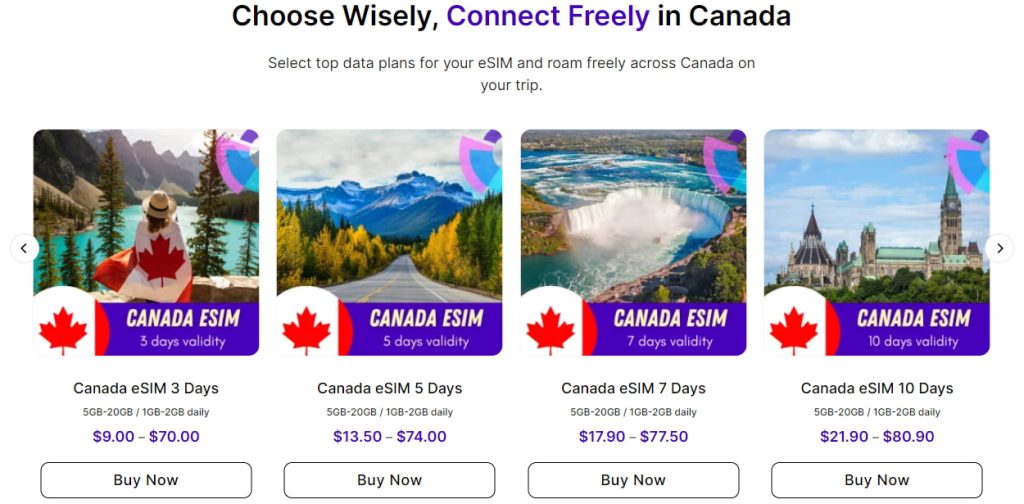
eSIMs provide a more convenient digital alternative to physical SIM cards when traveling internationally by allowing installation and activation via QR code scanning rather than a store visit.
Some key advantages of using an eSIM in Canada include:
- Purchase and activate plans online instantly with a QR code scan.
- Easily switch between plans without needing a physical SIM card.
- Works on any eSIM-compatible device, regardless of model or network.
- Save money on roaming fees with local Canadian providers.
- Enjoy seamless coverage throughout Canada with Rogers, Bell, Telus, and Sasktel networks.
Make the most of your Canadian vacation or business trip by choosing a versatile eSIM plan from Canada-esim.com. Enjoy quick and easy activation and great value rates – all without fussing with physical nano-SIM cards again. An eSIM is undoubtedly more convenient for international travelers exploring Canada.
6. Where To Buy a Canada SIM Card?
There are two options – an eSIM built into your device or a physical SIM inserted into your phone. Both allow tapping into Canada’s cellular networks.
6.1. Buy Canada eSIM plans
- Online purchase before the trip from providers’ websites. A good option for seamless activation on arrival but requires a compatible phone or ID information or address in Canada.
- Canada-esim.com – Allows you to purchase pay-as-you-go eSIM data plans for over 140 countries including Canada. Plans start at $9 for 1GB/day. No need for ID information.
6.2. Buy A physical Canada SIM Card
Here are a few options for obtaining a physical SIM card to use in Canada:
- Buy a physical SIM online before your trip. Websites like canadiansim.com sell prepaid SIM card Canada from carriers and deliver them to locations in Canada. Saves time on arrival but runs the risk of damage/loss.
- Purchase SIM at Canadian airport vending machines/stores upon landing. The most convenient places are airport stores on arrival at major Canadian airports like Toronto Pearson, Vancouver, Montreal, and Calgary. Convenient but prices may be higher without research.
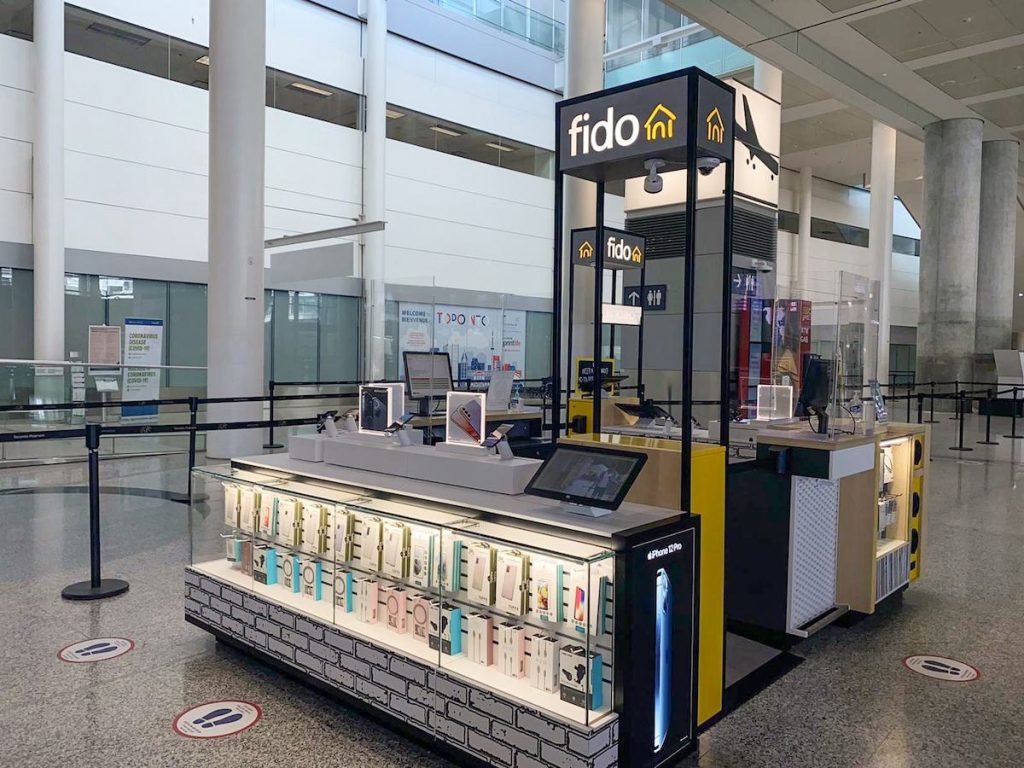
- Find retailers like convenience stores, and phone stores in cities/towns. Wide availability but takes time away from sightseeing. Major Canadian cities like Toronto, Vancouver, Montreal, and Calgary offer SIM cards at various locations.

Doing research and making advanced arrangements is the most hassle-free and cost-effective way to get a Canadian SIM Card as a visitor. An eSIM provides excellent accessibility.
7. How to use A Canada SIM card
Here are the basic steps to use an eSIM on your phone when traveling in Canada:
- Make sure your phone is unlocked. Most major carriers now sell unlocked phones, or you can ask your carrier to unlock your existing phone if it’s under contract.
- Purchase a Canada SIM card. Make sure to get a nano or micro SIM depending on your phone.
- Insert the SIM card. Turn off your phone and remove your existing SIM tray/slot.
- Set up the plan. Follow any activation instructions that come with the SIM card. You may need to register online or call a customer service number to set up your plan and add funds/minutes to your account.
- Configure network settings. Go to your phone’s Settings and select Cellular or Mobile Network. Select your Canadian carrier from the list of available networks.
- Start using your phone as normal making calls, sending texts, and using data within Canada.
That’s the basic process to get a prepaid Canada SIM up and running when visiting from abroad. Before leaving Canada, retain your SIM card if you want to keep the Canadian number or return it to the carrier/store for a refund of any unused credit.
8. Best Mobile Operators for Canada SIM Card
The major carriers in Canada are Rogers, Telus, and Bell. They provide full-service 5G plans covering all areas with customer support. Packages and options vary to meet different needs and budgets.
Several MVNOs piggyback on the larger networks like Chatr, Fido, Koodo, Lucky, PC, Petro-Canada, Public and Virgin+. MVNO plans tend to be cheaper with less data and benefits.
Here is a brief overview of each major operator:
- Bell – Largest network covering 97% of the land. Full-service plans, 5G access, unlimited options. Subsidiaries include Lucky Mobile and Virgin Mobile.
- Telus – Network covers 97% with full-service plans, 5G, and unlimited data. Subsidiaries are Koodo Mobile and Public Mobile.
- Rogers – Network covers 96% with full plans, 5G, unlimited. Subsidiaries include Chatr Mobile, Fido Mobile, Petro-Canada Mobility, and Cityfone.
- Sasktel – Regional operator in Saskatchewan. Cheap plans with unlimited talk/data but coverage only in the Saskatchewan region. Offers phone financing.
- MVNOs – Resell bandwidth of major carriers. Popular options include Lucky Mobile, Virgin Mobile, Koodo Mobile, Public Mobile, Chatr Mobile, and Fido Mobile. Fido offers generous data plans, Spotify premium, and phone financing.
So in summary, Bell, Telus, and Rogers have nationwide coverage while Sasktel and MVNOs offer cheaper plans for major city usage.
9. Tips For Saving Data for Canada SIM
Here are some tips for saving data when using a prepaid SIM card in Canada:
- Turn off automatic app updates and download larger updates only over WiFi.
- Disable auto-play of videos on websites and apps. Play only when needed to save streaming data.
- Adjust streaming quality in video apps to lower resolutions to use less bandwidth.
- Instead of using data, use offline Google Maps to download map areas for offline navigation.
- Avoid frequent social media scrolling and picture/video sharing which can use significant data in the background.
- Turn off location services for apps when not needed for directions to prevent constant location updates.
- Disable carrying unused apps running in the background which may download data.
- Consider downloading audio and ebooks onto your device before the trip for offline use.
- Limit browser page refreshes and reopen sites directly instead of through links/searches.
- Track data usage through your phone settings to monitor the remaining allowance.
Being mindful of data usage helps stretch that prepaid SIM further when traveling in Canada.
10. FAQs about Canada SIM Card
Can I use my SIM card outside of Canada?
No, prepaid SIM cards purchased in Canada will only work within Canada. The service is deactivated once you leave Canada.
How do I know if my device is unlocked?
Check with your carrier or phone maker. Unlocked phones work on any network. Locked phones only work on one carrier and need to be paid off to unlock.
Which carriers have good coverage in Canada?
The three major carriers are Rogers, Bell, and Telus. They all have extensive LTE networks across cities and most travel routes. Region-based carriers and MVNOs also piggyback off these networks.
Can I change my Canada SIM plan if I need more data?
Yes, most providers allow you to upgrade or downgrade your plan online if your data needs to change during your trip. Fees may apply.
How do I top up my prepaid Canada SIM balance?
You can typically top up online via credit card or buy physical top-up cards from convenience stores and pay them against your account.
What payment methods do Canadian mobile carriers accept?
Major carriers accept credit, and debit cards and interact e-transfers from most countries. Always check if additional deposits are needed for non-Canadian payment methods.
Do Canadian SIMs support international calling?
Plans usually don’t include international calls/texts but you can add packages to call back home for an extra fee on top of the regular plan cost.
11. Conclusion
To sum up, if you want good coverage, local phone numbers, and data plans, get yourself a Canada SIM card. Prepaid SIM prices, however, are high compared to other countries. Considering coverage in your local area, select a provider/plan that matches your requirements and budget. A Canada SIM card must be used to ensure connection regardless of the length of the trip.
